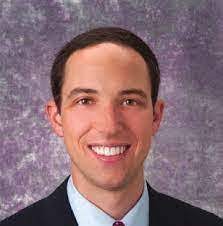
Stem Cells and Regenerative Medicine: A Beacon of Hope for the Future
In the realm of medical science, the exploration of stem cells and regenerative medicine holds the promise of revolutionary breakthroughs, offering a beacon of hope for addressing previously incurable diseases and injuries. Stem cells, with their remarkable ability to transform into various cell types and regenerate damaged tissues, pave the way for groundbreaking advancements in healthcare and hold immense potential for the future of medicine by Dr Michael Hilton. At the heart of regenerative medicine lie stem cells—undifferentiated cells with the extraordinary potential to develop into specialized cells with specific functions. These cells exist in various forms, including embryonic, induced pluripotent, and adult stem cells, each with unique capabilities and applications in medical research and therapy.
Dr Michael Hilton Embryonic stem cells, derived from embryos, possess unparalleled pluripotency, enabling them to differentiate into any cell type in the human body. Induced pluripotent stem cells, reprogrammed from adult cells, exhibit similar potential, offering an ethically sound alternative to embryonic stem cells. Adult stem cells, found in specific tissues, contribute to tissue repair and regeneration.
The versatility of stem cells opens avenues for regenerative therapies aimed at treating a myriad of diseases and injuries. From neurological disorders like Parkinson’s and Alzheimer’s to cardiovascular conditions, diabetes, spinal cord injuries, and degenerative diseases, stem cell-based therapies hold the promise of repairing damaged tissues, restoring function, and potentially curing previously incurable conditions.
Regenerative medicine not only focuses on repairing tissues but also involves the development of tissue-engineered organs or parts. This transformative approach could address the shortage of organ donors and provide personalized solutions for patients in need of transplants.
Moreover, stem cell research contributes significantly to our understanding of disease mechanisms, allowing scientists to model diseases in the lab, screen potential drug candidates, and study disease progression, paving the way for more targeted and effective treatments.
However, while the potential of stem cells and regenerative medicine is immense, challenges and ethical considerations persist. Ensuring the safety and efficacy of stem cell therapies, addressing immune rejection issues, and navigating ethical concerns surrounding the use of embryonic stem cells are critical aspects that require careful consideration and regulation.
The future of stem cells and regenerative medicine hinges on continued research, technological advancements, and ethical guidelines. Collaborative efforts between researchers, healthcare professionals, regulatory bodies, and ethical committees are imperative in harnessing the potential of stem cells while ensuring responsible and ethical practices.
In conclusion, Dr Michael Hilton stem cells and regenerative medicine stand at the forefront of medical innovation, offering hope for addressing previously untreatable diseases and injuries. The potential of these advancements to revolutionize healthcare is undeniable, presenting a future where personalized regenerative therapies transform the landscape of medicine, offering renewed hope and improved quality of life for countless individuals worldwide.